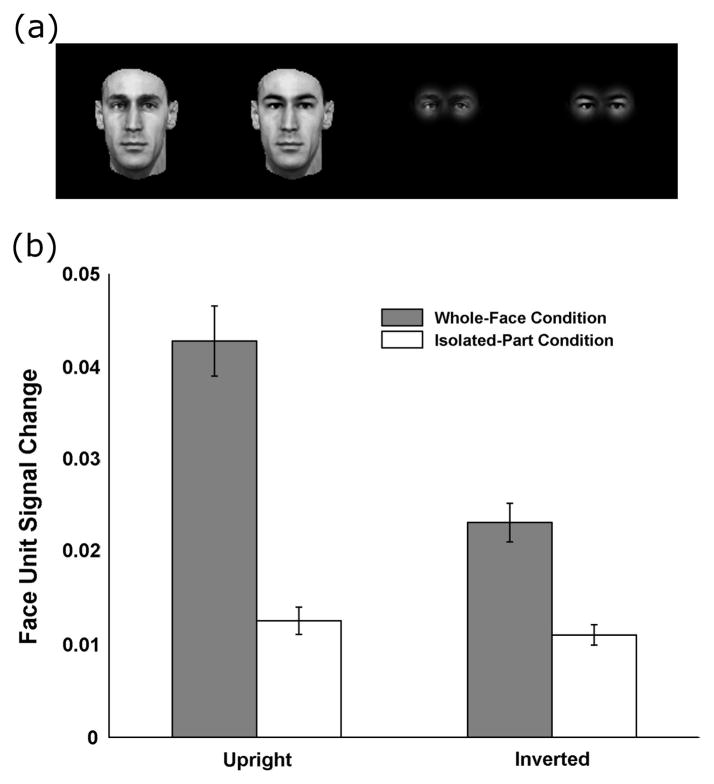Figure 2.
Face units in the model show holistic tuning to upright faces. (a) Example stimuli, from left to right: two faces with different eye regions but otherwise identical (whole-face condition), and then the same two faces with only the eye regions showing (isolated-part condition). (b) The average face-unit signal change induced by a different eye region (across all combinations of 20 faces and 19 sets of eyes for a total of 380 images, each run both upright and inverted). Face-unit signal change is defined as the euclidean distance between the activation patterns of the most active face units to the two stimuli in a pair (see (Jiang, et al., 2006)). The magnitude of this distance is analogous to how “different” two faces look, and is the measure used to predict behavioral face discrimination. Note that there is strong holistic tuning for upright faces (large difference between the two left bars), but less so for inverted faces (two right bars). Moreover, the model predicts an inversion effect for whole faces (gray bars), but not for isolated face parts (white bars), in agreement with behavioral data (Tanaka & Farah, 1993).

